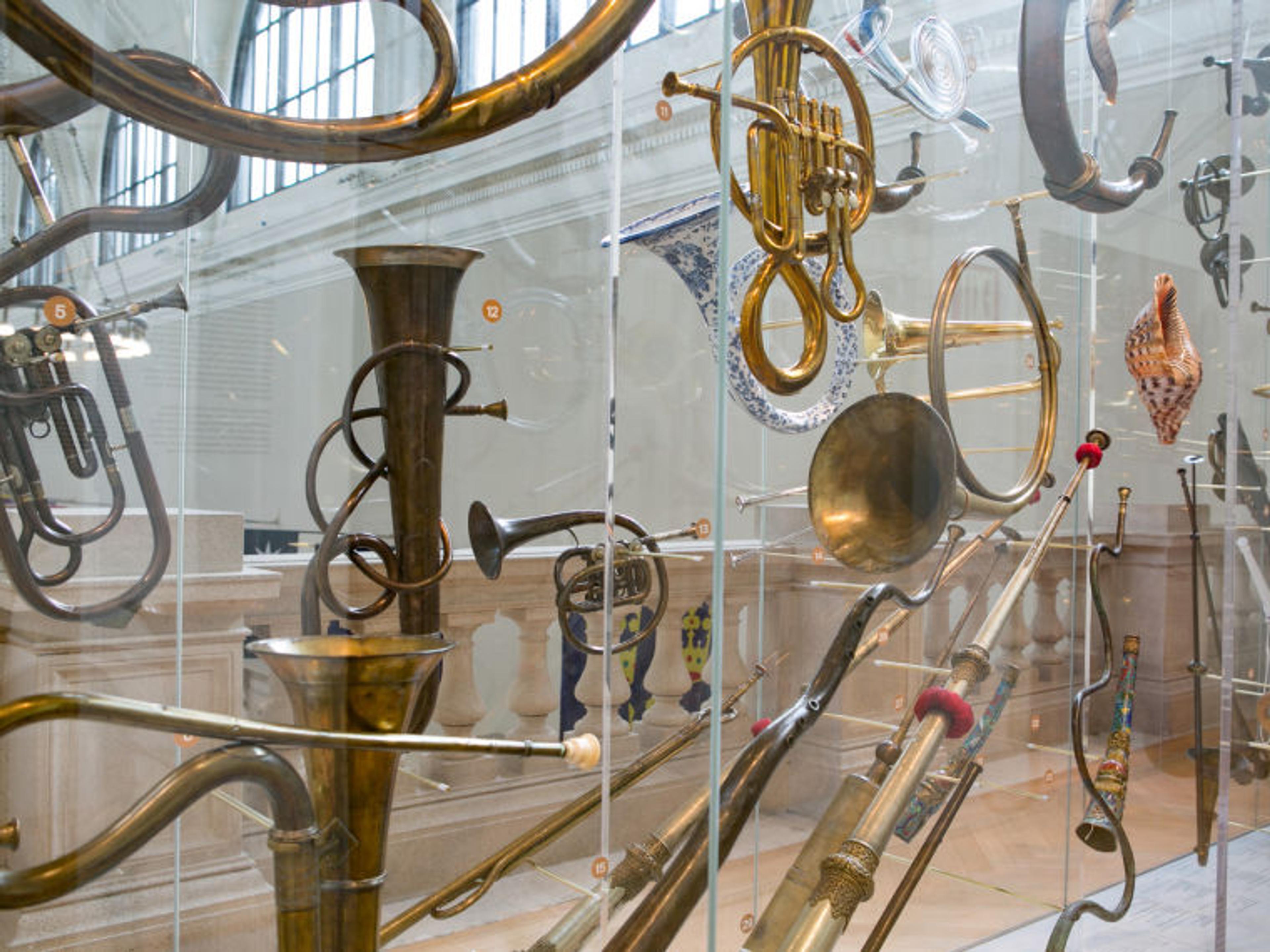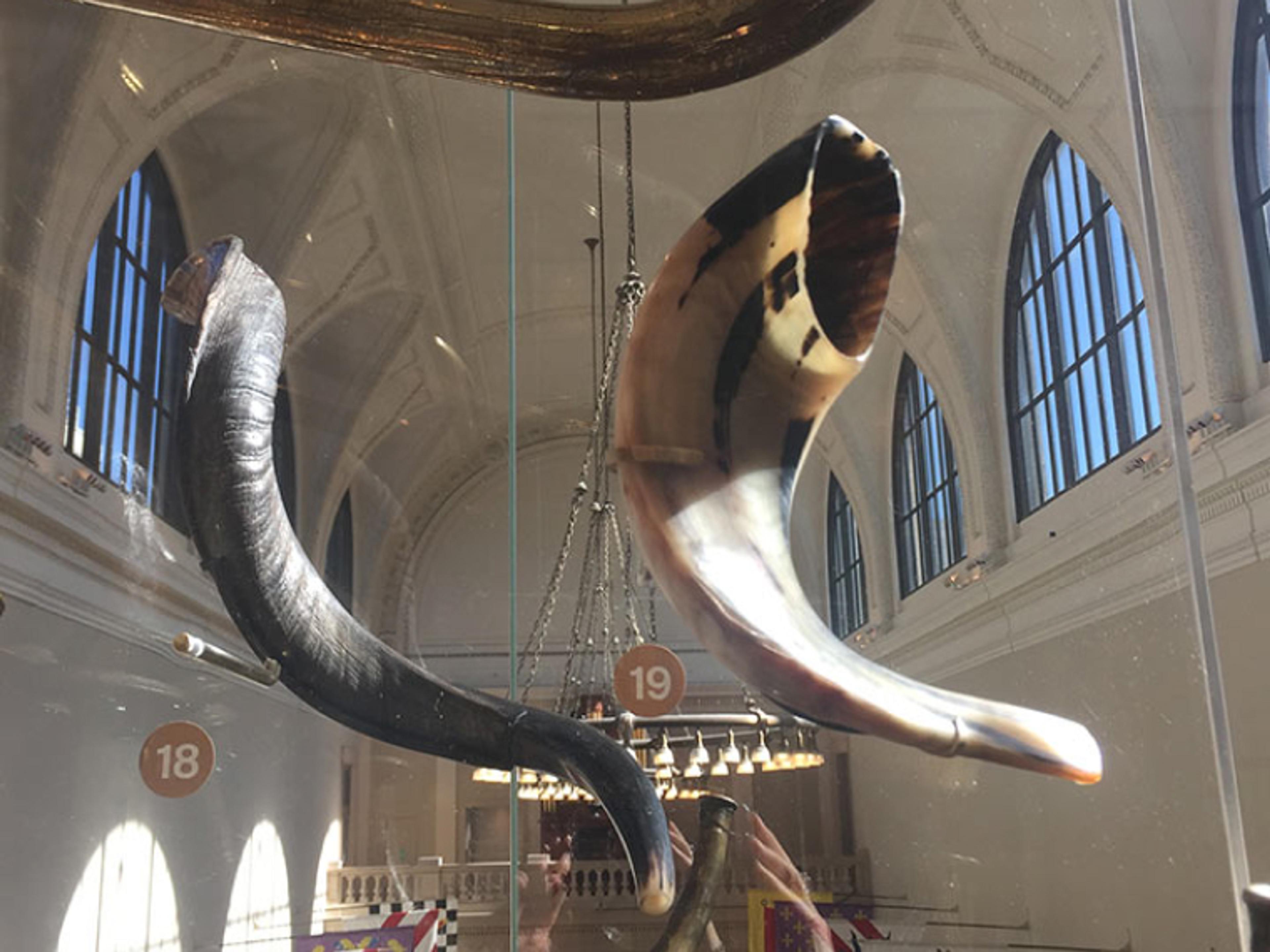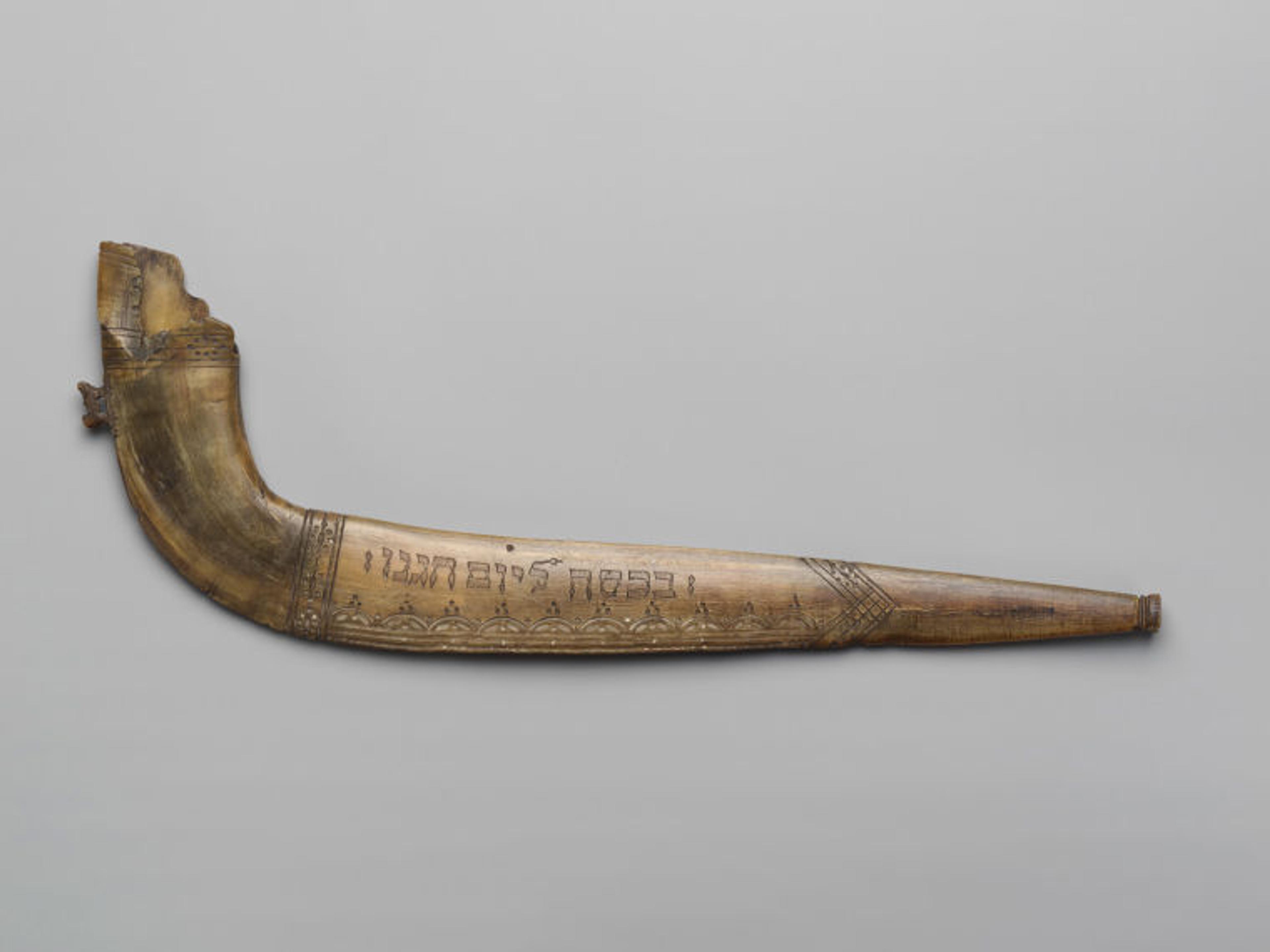Sound Beginnings: The Shofar and the Jewish High Holy Days
View of the Fanfare installation in gallery 680

«Celebrate the start of the Jewish New Year with a visit to the recently opened Fanfare installation, which explores the diverse forms and interwoven uses of "brass" instruments throughout time and around the world. The layout of Fanfare traces the earliest roles of these instruments, which includes signaling and use in spiritual practice. Some of their first forms—including trumpets made from found materials such as animal horns, bones, and conch shells—can be seen in the center of the display.»
References to various types of trumpets abound in Judeo-Christian scripture and the Qur'an. The sounding of the shofar is central to Rosh Hashanah observances, where up to 100 shofar blasts are played during the course of the holy day's morning services. It is also heard later in September at the conclusion of the Yom Kippur service, where a single blast marks the end of the fast. A shofar player can produce a number of different calls, each of which has its own scriptural significance. Calls are distinguished by note length, inflection, and articulation.
The shofar was also used for signaling in secular and martial contexts. A variety of animal horns are used to make shofars; the Talmud specifies which are permissible. To form the horn into a shofar, the tip is cut off and bored out to create an opening for blowing. The horn is often heated, so that the narrow end can be straightened and shaped. Sometimes its body is also worked to produce a flatter profile. The wide end of the horn forms its bell.
Detail of two of The Met's shofars. Photo by the author

The Fanfare display includes two types of shofar: ram's-horn shofars (above right) are used by Ashkenazi and Sephardic communities; the larger, curled instrument (above left) is made from the horn of a kudu antelope and is used by Yemenite Jews.
The Met's musical instrument collection includes a number of shofars, some of which will be displayed in the renovated galleries, which are slated to reopen in 2018.
Eighteenth century shofar from Europe made of ram's horn (89.4.2899)

A selection of historical ram's-horn shofars from The Met collection. From left to right, top to bottom: Europe, 19th century (89.4.373); Russia, 19th century (89.4.3375); ca. 1850–1946 (53.56.7); Europe, 18th or 19th century (89.4.1501).

Visitors to the Museum heard the sound of the shofar on Friday, September 22, 2017 at the opening performance of the Fanfare concert series.
Bradley Strauchen-Scherer
Dr. Bradley Strauchen-Scherer is a curator in the Department of Musical Instruments.